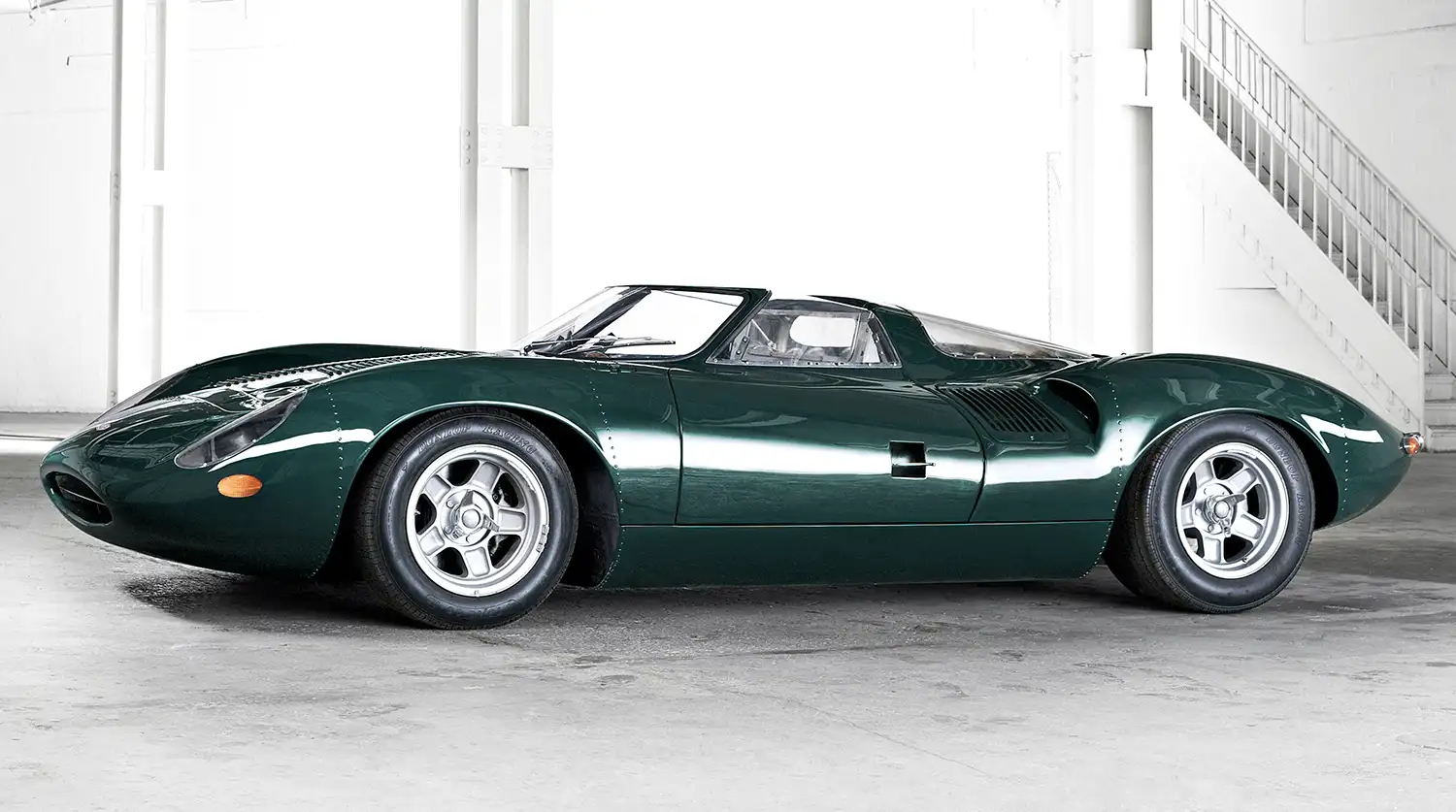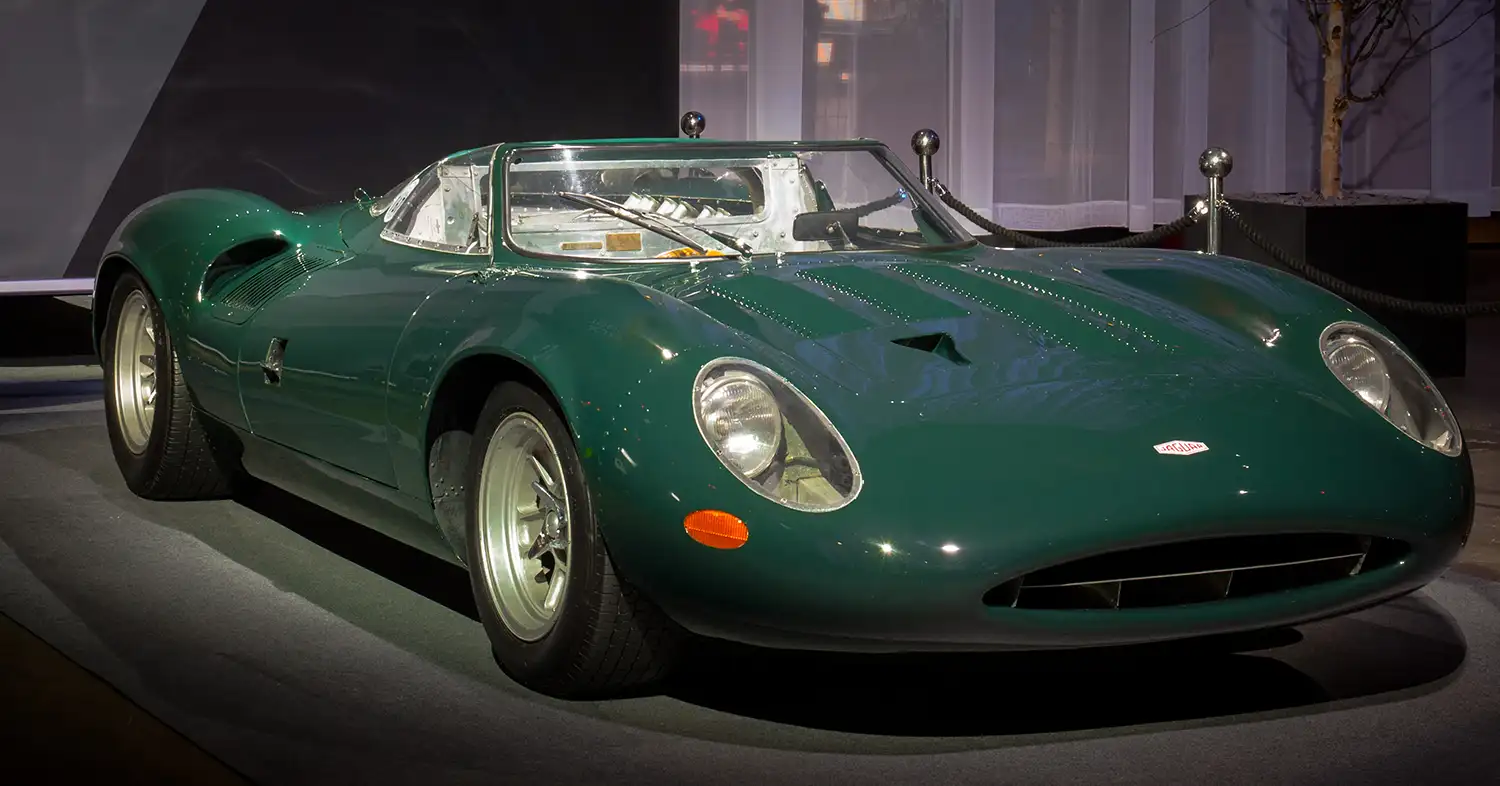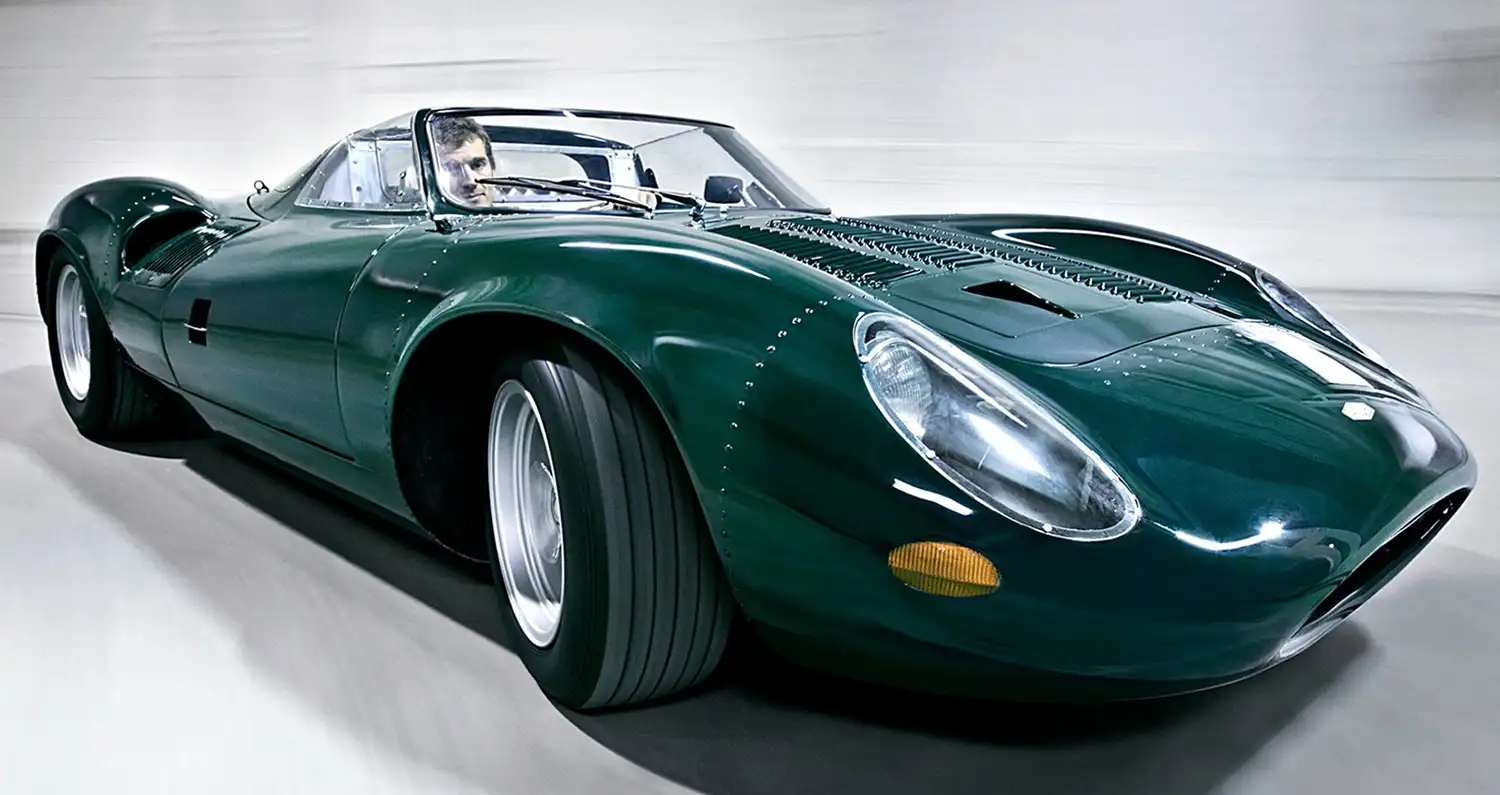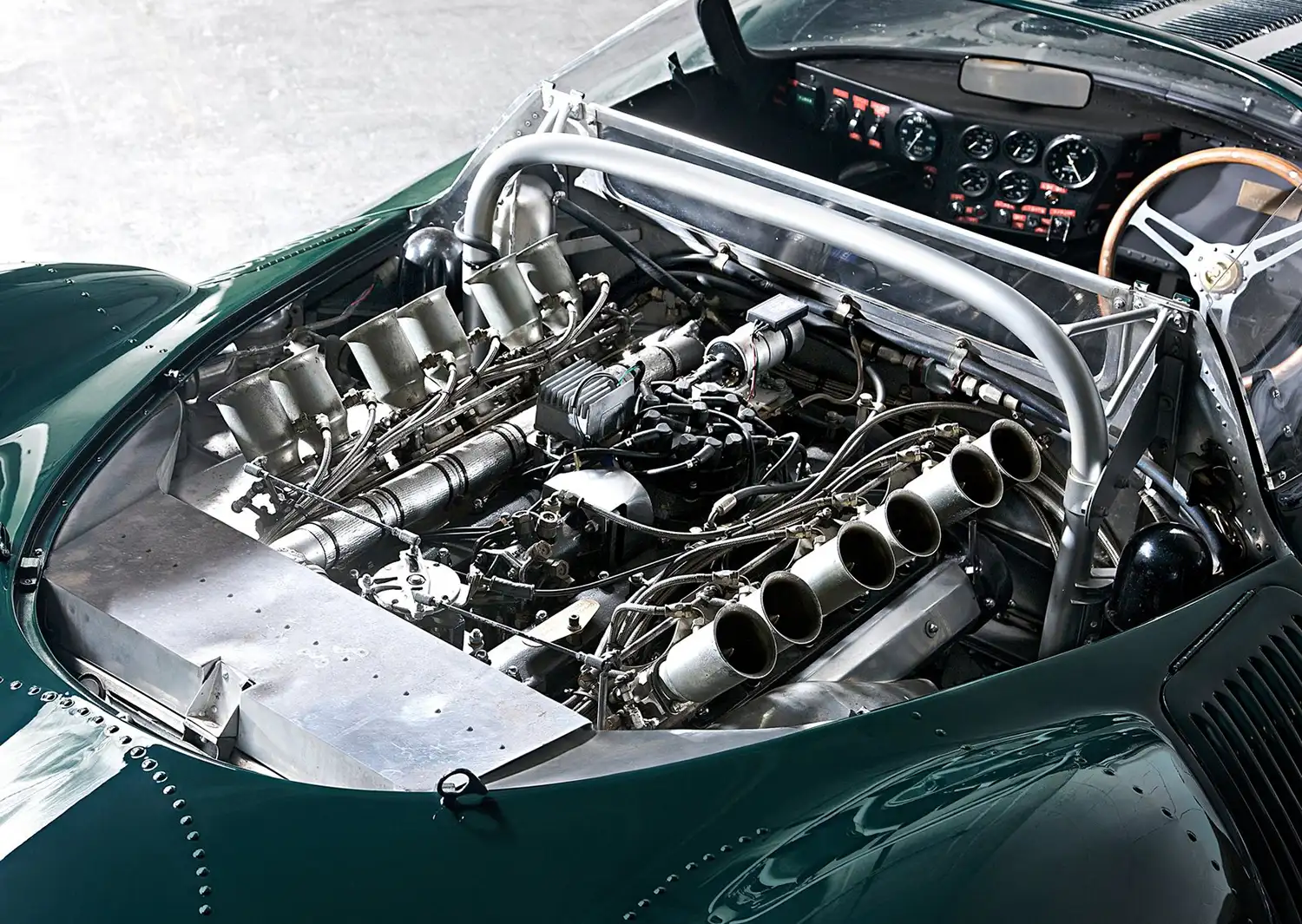
The Jaguar XJ13, a unique and ambitious prototype racing car, was developed by Jaguar in the mid-1960s with the aim of challenging at Le Mans. Despite its potential, it never raced, and only one prototype was ever produced.
Engineering Vision and Design
Jaguar had considered the development of a V12 engine as early as 1955, initially for racing purposes and later for road use. Unlike the production-focused XK engine, the V12 was designed with racing in mind from the start. Essentially, it combined two XK 6-cylinder engines on a common crankshaft with an aluminium cylinder block. Differences included unique inlet porting, valve angles, and combustion chamber shapes. The first V12 engine ran in July 1964.

Mid-Engine Concept
The idea of a mid-engine prototype emerged in 1960, but construction didn’t begin until 1965. By March 1966, the first Jaguar XJ13 was running. Malcolm Sayer, the aerodynamicist behind the Jaguar C-Type, D-Type, E-Type, and XJ-S, designed the aluminium body using aircraft industry techniques from his background at the Bristol Aeroplane Company.
The XJ13 featured a mid-engine layout with a 5.0-litre V12 engine mounted behind the driver. This engine acted as a stressed chassis member, paired with a five-speed manual ZF transaxle driving the rear wheels.

Suspension and Chassis
The front suspension of the XJ13 used wishbones similar to those of the E-Type, but with more conventional coil spring/damper units instead of longitudinal torsion bars. The rear suspension retained some E-Type elements, such as the use of driveshafts as upper transverse links. However, it also incorporated two long radius arms per side angling back from the central body tub along with lower links, offering a more refined setup.
Management and Development Challenges
Despite the dedication of the designers, the Jaguar XJ13 never became a priority for company management. This was partly due to the 1966 merger with BMC, which shifted focus away from racing projects. Additionally, by the time the XJ13 prototype was complete, Ford had introduced the 7.0-litre GT40, making the XJ13 obsolete in the competitive racing landscape. Testing at MIRA and Silverstone revealed that the XJ13 would have needed significant development to be competitive. Consequently, the prototype was stored, and no further examples were produced.
The Jaguar XJ13 remains a symbol of what could have been—a unique blend of innovation, design, and racing potential that, unfortunately, never got the chance to prove itself on the track.
Source: Jaguar
This Article use tools from Chatgpt
